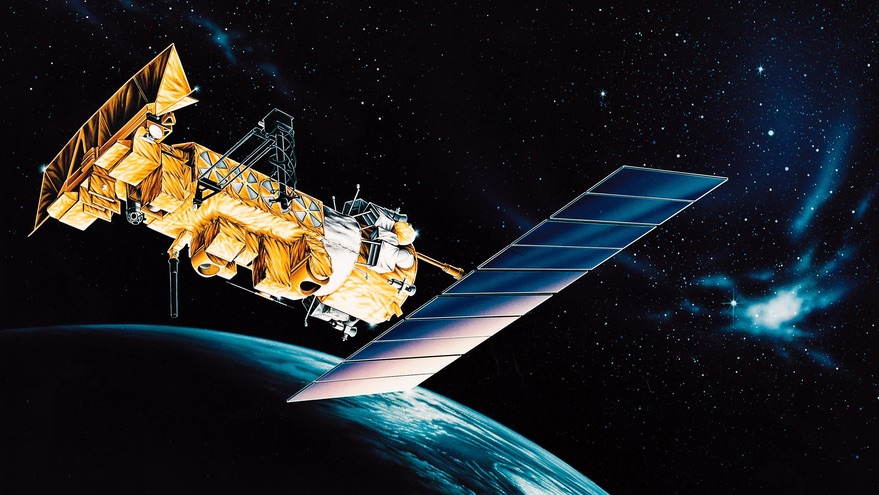WASHINGTON — A polar-orbiting weather satellite decommissioned nearly eight years ago has broken up, adding to the growing debris population in a key orbit.
The Space Force’s 18th Space Control Squadron said March 18 it hard confirmed the NOAA-17 satellite broke up March 10. The squadron said it was tracking 16 pieces of debris associated with the satellite, and that there was no evidence the breakup was caused by a collision.
In a statement to SpaceNews March 19, the National Oceanic and Atmospheric Administration confirmed that the satellite had broken up, having been notified about the incident by NASA’s Orbital Debris Program Office. “At this time, the debris poses little threat to the International Space Station or to any other critical space assets,” NOAA stated.
The spacecraft, originally designated NOAA-M, launched in June 2002. The spacecraft was designed to operate for three years but served in a primary or backup role for nearly 11 years until NOAA formally decommissioned it in April 2013.
Neither NOAA nor other agencies released the cause of the breakup. However, NOAA-17 is similar to other polar-orbiting satellites that suffered breakups. In November 2015, the NOAA-15 satellite broke up, nearly a year and a half after a “critical anomaly” ended operations. Two satellites in the Air Force’s Defense Meteorological Satellite Program, DMSP F-13 and DMSP F-12, broke up in February 2015 and October 2016, respectively,
The failure of DMSP F-13 was blamed on a design flaw in the satellite’s battery that is also found on other DMSP satellites. Those satellites, along with NOAA-15 and NOAA-17, were built by Lockheed Martin.
When NOAA decommissioned NOAA-17 in 2013, the agency said it performed a “deactivation process” with the spacecraft. In a statement to SpaceNews, NOAA said that process included disconnecting the batteries on the spacecraft as well as opening thruster valves and turning off its transmitters. “These steps were taken to ensure the satellite was as inert as possible and minimized the risk of radio frequency interference with other spacecraft after decommissioning,” NOAA stated.
Those activities are among the federal government’s recommendations to passivate spacecraft at the end of their lives, removing energy sources that could cause explosions. “All onboard sources of stored energy of a spacecraft or upper stage should be depleted or safed when they are no longer required for mission operations or postmission disposal,” the U.S. government’s Orbital Debris Mitigation Standard Practices document states.
The fact that a satellite could still break up even after following those best practices shows the limits of those guidelines. “I don’t doubt NOAA did what they could, and think this is more a case of a legacy satellite that was designed in an era before we really cared much about debris mitigation,” said Brian Weeden, director of program planning at the Secure World Foundation.
While NOAA said the satellite is not a threat to the space station or “other critical space assets,” it is in a sun-synchronous orbit used by other weather and Earth observation spacecraft.
Some of those satellites are not only threatened by such debris, but also pose a threat of creating more debris. Weeden noted a report by NASA’s inspector general in January that found two NASA missions in polar orbits, QuikSCAT and Terra, not only fail to meet the 25-year threshold for deorbiting spacecraft after the end of their missions, they also pose a risk of explosion because of batteries that cannot be disconnected or propellant tanks that cannot be depressurized.
That report found that “mitigation-only” activities to prevent the creation of new orbital debris were not sufficient to keep the space environment stable. “Rather, to effectively address the orbital debris issue, global mitigation and strategic remediation efforts are necessary,” the report concluded, recommending NASA support active debris removal efforts, including funding technologies to enable such systems.
Weeden agreed. “I would hope this serves as yet another example why the U.S. and other governments need to invest in active debris removal capabilities to take legacy satellites that were never designed to comply with the debris mitigation guidelines and remove them from orbit.”
